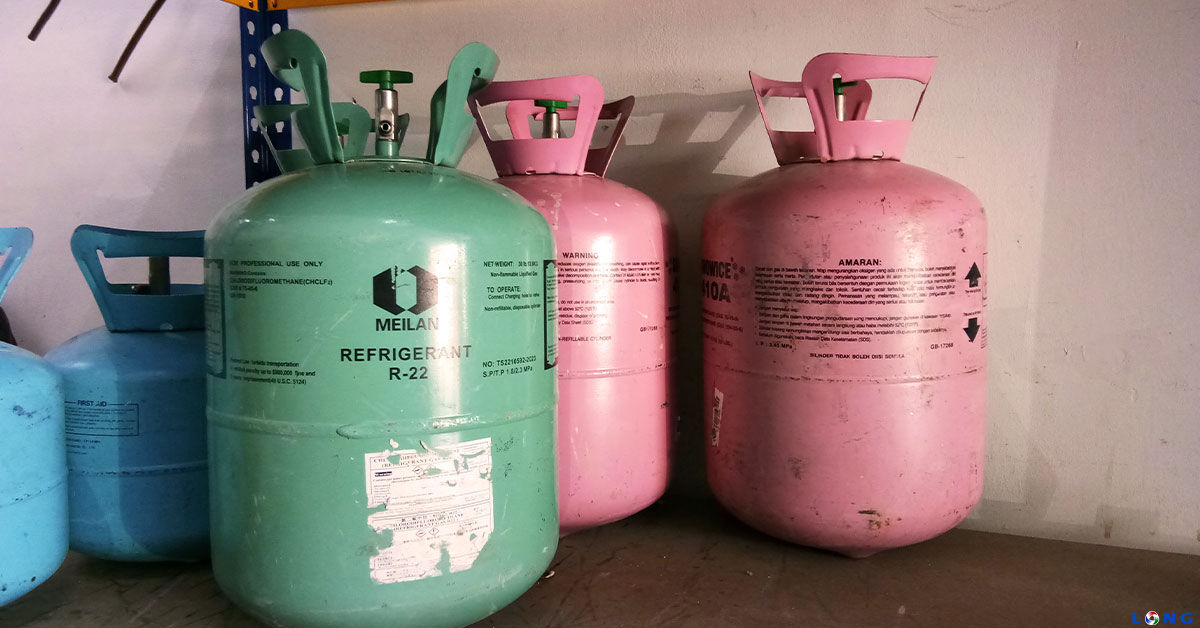
HCFC-22 refrigerant, more commonly known as R22, was one of the very first “modern” refrigerants used in residential, commercial, and industrial heating and cooling systems, dating all the way back to the 1920’s. Alongside other refrigerants such as R11 and R12, R22 was classified as Freon. By the 1960’s it was used in nearly every home and commercial office in America. Unfortunately, due to its chemical composition containing chlorine, the harmful effects of these early refrigerants began to pile up quickly. Whenever a refrigerant leaked, poisonous gases vented into the atmosphere, creating an urgent need for change. In the late 1970’s and early 80’s, scientists noticed a dangerous thinning of the Ozone layer above the Arctic circle as a direct result of the overuse of CFC and HCFC refrigerants. The world’s governments took action by creating the Montreal Protocol, a treaty which outlined specific timelines to phase out these harmful refrigerants entirely.
Manufacturing on new HVAC systems that utilize R22 ceased before January 1, 2010, and the refrigerant itself can no longer be produced nor imported into the United States as of January 1, 2020. This means that all HVAC systems requiring the use of R22 refrigerant will need to rely either on existing stock of unused R22, or on recovered and reclaimed/cleaned R22 from existing systems. The price for R22 in 2023 continues to skyrocket due to shortages and costs required to clean and recycle it. In the long run, the more cost-effective solution is to consider installing new heating and cooling systems that use safer, more environmentally friendly refrigerants.
If your commercial building currently has an HVAC system that utilizes R22 refrigerant, there are a number of options available to you. One option may just be to leave it alone. No refrigerant should ever need to be topped off within a circuit; if your refrigerant levels are low, it means you have a leak. If your commercial HVAC system has no leaks, you can prolong its life by performing regular preventative maintenance to keep it running smoothly. If you do notice a leak, however, repairs can get costly very quickly. It’s important to keep in mind that while this option may be the simplest, the potential for a refrigerant leak could be quite expensive in the end.
If you notice that your R22 HVAC system seems to be nearing the end of its lifespan, it may be possible to perform a retrofit as a cost-saving solution, depending on the age and condition of the equipment. While this option may help you buy some extra time, for the vast majority of cases, the best option available is to replace your R22 system altogether with an HVAC system that utilizes a newer, more environmentally friendly refrigerant.
LONG can provide you with a list of options based on your building’s current systems, needs, and budgets. We can advise you on your best course of action, be it performing preventative maintenance to keep your R22 HVAC system functioning, retrofitting your HVAC system to extend its lifespan, or shifting away from R22 refrigerant and replacing your HVAC system entirely. Contact us to learn more by clicking the button below, and we will be happy to schedule a time to meet with you about your best solutions regarding R22.
If you’re interested in learning more about R22 refrigerant, you can view some additional resources below:
Refrigerant HQ: R22 Fact Sheet
Miranda works with the Littleton, CO HVAC Service team.
We are always looking for bright, ambitious new team members. Join Team LONG today!